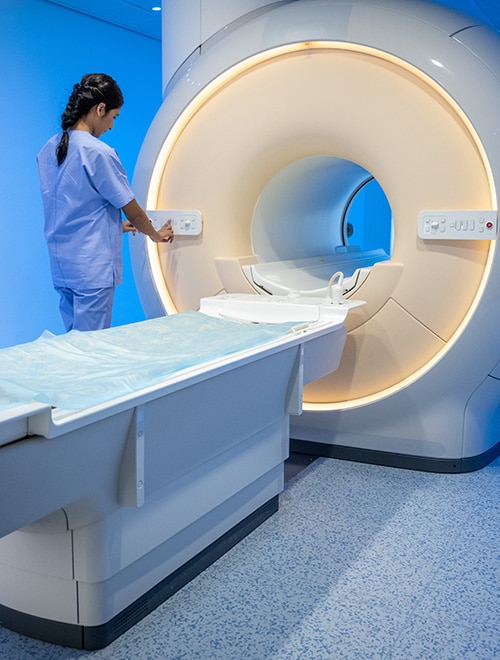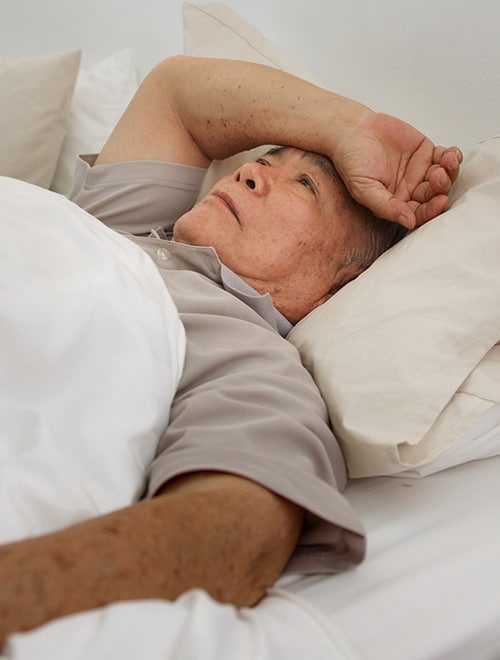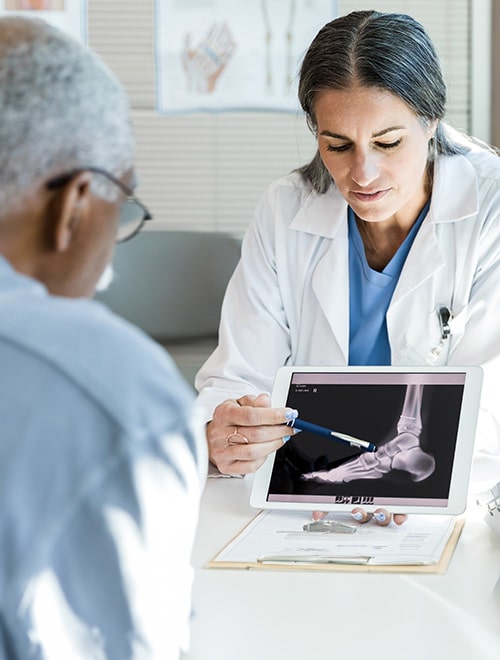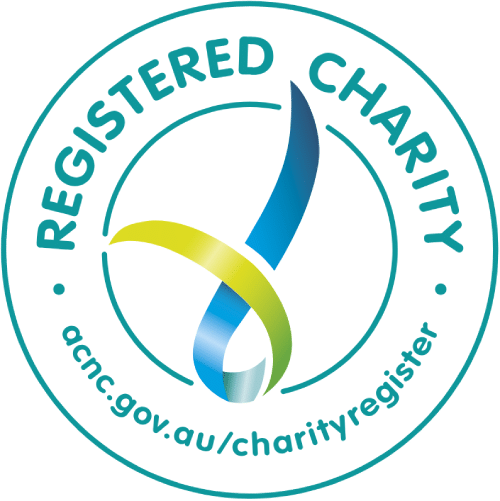- 13 min read
What is pre- and rehabilitation?
Rehabilitation involves helping you regain your psychological, physical, mental and social functioning after treatment. Prehabilitation helps you to be healthy and strong before undergoing treatment and aims to prevent or reduce treatment side effects. Both may include education, support and/or different therapies, medications, devices and lifestyle changes.
Pre- and rehabilitation can involve a healthcare team of different professionals that aim to improve your recovery and quality of life before and after treatment. This team may include physical and occupational therapists.
This section of your toolkit provides information on pre-and rehabilitation strategies, therapies and support.
Diet and nutrition before and after treatment
Eating a nutritious diet and living well is important for prerehabilitation before treatment and for rehabilitation care after treatment. Healthy eating can help maintain or improve your body weight and quality of life. Follow the below links to learn more about living and eating well.
Exercise – the importance of physical activity before, during and after treatment
Exercise is important before, during and after prostate cancer treatment. It can not only improve your physical health, fitness level, strength, mental wellbeing and quality of life, but also reduces side effects, improves your recovery and helps you tolerate treatments better. Follow the link to learn more about the benefits of physical activity, the most effective forms of physical activity and how often to exercise when you have prostate cancer.
If you are experiencing treatment or disease-related issues or have specific challenges, you may need a targeted exercise prescription. In this case it is recommended that you consult with an exercise specialist, such as an accredited exercise physiologist (AEP) or physiotherapist, who will assess your health and fitness and then prescribe a targeted exercise program that is safe and will achieve the best outcomes for you.
Talk to your healthcare team or call a PCFA nurse for more information on contacting an exercise specialist or find an AEP near you by visiting www.essa.org.au/find-aep or calling (07) 3171 3335.
Pelvic floor exercises are also important as you age and to strengthen your pelvic floor muscles before and after treatments, such as surgery.
Follow the link to: Pelvic floor exercises – what are they and how do you do them?
Exercise before treatment
It can be very beneficial to complete an exercise program to prepare your body for surgery, chemotherapy or radiation therapy.
With treatments such as surgery and radiation therapy, there’ll often be a time frame of several weeks between being advised of your treatment and having treatment. This can be a good time to start a specific exercise program that increases your resilience, fitness level and helps you lose some body fat if you’re overweight. These can all contribute to your tolerating treatment better and recovering faster.
Exercise during treatment
Exercise has been shown to be very effective in reducing treatment side effects.
It is critical that you exercise throughout hormone therapy to counteract its potential side effects, such as putting on weight and increasing your risk of cardiovascular and metabolic disease. Exercise will also improve your muscle and bone mass, strength and physical function, while reducing some of the mental and emotional side effects of hormone therapy.
During radiation or chemotherapy, exercise is recommended to reduce the severity of your side effects, especially fatigue (tiredness). There is emerging evidence that exercise done immediately before you receive a dose of radiation or chemotherapy may make the treatment more effective.
Exercise after treatment
It is proven that exercise helps with rehabilitation after cancer treatment. It builds up muscle size and strength, helps you regain your physical function, improves the capacity of your heart and lungs, reduces tiredness, and enhances your overall wellbeing and quality of life. There is a good chance that regular exercise may reduce the risk of your cancer coming back. It can also help prevent you from developing other chronic diseases that can occur later as side effects of your cancer treatment.
If you don’t know where to start with an exercise program or are having treatment-related challenges, you may need the advice of an accredited exercise physiologist (AEP).
You can find an AEP in your local area through the website www.essa.org.au/find-aep (select “cancer” as a specialty in the advanced search dropdown menu). Medicare may pay for all or a portion of the cost of a consultation with an AEP. This involves asking your GP for a chronic disease management plan (CDM) that includes a referral to an AEP.
Follow the link to Physical Activity for more resources to get you started on an exercise program.
Surgery – pre and rehabilitation
Surgery to remove your prostate, also called radical prostatectomy, is an effective treatment for prostate cancer, but it can have side effects. Follow the links below to learn about this procedure and what happens at the hospital and find out the possible side effects.
To reduce the risk of side effects, improve your healing and recovery and deal with challenges and side effects caused by surgery, the following section of your toolkit will guide you through what to do before and after surgery, what happens immediately after surgery and the options available to you if you require rehabilitation after any prostate cancer treatment.
Before and after surgery – what to do at home
Pelvic floor exercises
Before surgery it is a good idea to start pelvic floor exercises to strengthen your pelvic floor and help prevent urinary incontinence. After surgery, pelvic floor exercises can also help, but you must not do them until after your catheter has been removed. To learn more, see Pelvic floor exercises – what are they and how do you do them?
Rest and physical activity:
- It is normal to feel tired and fatigued after surgery, and you may need to rest in the afternoon
- Have short periods of physical activity each day, such as gentle walking outside
- Rest between physical activities and if you still feel tired, increase your rest periods
- Do not do any heavy lifting or any activities that involve straining
- Your healthcare team will let you know when you can go back to your normal physical exercise
Eating and drinking:
- Eat a nutritious and healthy diet
- Keeping up the fluids, especially water, is important to help clear your catheter after surgery. For more information follow the link to: How do you manage your catheter care when at home?
- If you have a medical condition that restricts the amount of fluid you can drink, discuss this with a member of your healthcare team.
It is important to drink plenty of water to prevent constipation before and after surgery. Constipation may cause you to strain while having a bowel motion, which can affect the healing of the join between your bladder and urethra. Your doctor may also advise you to take laxative medications to ensure regular, soft bowel motions.
What happens immediately after surgery?
Nursing staff and/or physiotherapists will help you with any coughing, deep breathing or leg exercises that you need to do following surgery. The aim of these is to prevent chest and circulation complications. However, doing these effectively may cause you some pain, so let your healthcare team know and they can provide you with some pain relief.
You will be encouraged and helped to walk short distances and sit out of bed on the first day after your surgery. You may tire easily so you will need to take regular rest periods between exercise and activities.
Rehabilitation after prostate cancer treatments
Prostate cancer treatment can cause side effects that may need surgery, devices or other forms of rehabilitation.
Follow the link to Treatments & Side Effects to learn what is involved in each treatment and what are the potential side effects.
Rehabilitation for erectile dysfunction
Erectile dysfunction can be managed in many ways – follow the link to Sexual Function to learn more. There is also a range of medical treatments for penile rehabilitation.
Penile rehabilitation is the use of a medication and/or a medical device to encourage blood flow to the spongy cylinders in your penis. This improves oxygen supply to the tissues of your penis. The aim is to try to prevent permanent damage to the tissues and potentially improve the return of your erectile function following treatment. Evidence suggests better results if you start a rehabilitation program early after surgery.
Programs for penile rehabilitation can include:
- Tablet medications either before or after treatment
- Penile injection medication
- Vacuum erection devices
- Different combinations of the above
The program consists of a plan to achieve a certain number of erections each week. Like all treatment plans, a penile rehabilitation program will be based on your individual needs and situation and will vary from doctor to doctor. Ask your healthcare team before treatment whether a penile rehabilitation program is an option for you. A referral or recommendation to a specialist in this area can be arranged through your healthcare team.
Medications for erectile dysfunction
Approximately 1 in every 3 men over the age of 40 experiences some degree of erectile dysfunction, with problems increasing with age. It is useful to know that changes to your erectile function may well have occurred anyway at some point, without a prostate cancer diagnosis or treatment.
Medications including sildenafil (Viagra), avanafil (Spedra), vardenafil (Levitra) and tadalafil (Cialis) may help you to achieve an erection by increasing blood flow to the penis following sexual stimulation or sexual arousal.
These medications must only be used with a doctor’s prescription and under medical supervision. It’s not safe to take these medications if you are on medication (nitrates) for chest pain (angina).
How quickly the medication works and how long it lasts will depend on your individual situation, which medication you are taking and the dose of the medication. You should trial the medication several times before deciding on the success of this treatment option. In the early phases of your recovery, these medications may not be enough to achieve an erection. However, your response may improve as you keep using them. If the tablets are not effective, your doctor may suggest a different method for achieving erections. It is important to keep the blood flowing to the penis as this helps to keep the erectile tissues healthy. From time to time, you can retry the tablets and switch back to them when they are working.
Penile injection medication
These medications are injected into your penis when you want to have an erection. They can be very effective. You don’t need to be sexually stimulated first.
Erections can occur within 10 minutes after the injection and generally last for 30 to 60 minutes.
You can be taught to inject yourself; however, the technique does need practice and it’s recommended that you are trained by a healthcare team member who specialises in this area. This treatment will only work effectively if you use the correct dose of the medication that works for you and the correct injection technique.
Seek urgent medical help if your erection won’t subside. Medications used to treat erectile dysfunction can sometimes cause priapism. This is an erection that lasts longer than 2 hours and won’t subside. Priapism is a medical emergency as it can damage the penis. If you have an erection that lasts for more than 2 hours, follow the instructions given to you by the healthcare professional who trained you in penile injections, or go to the nearest emergency department.
Vacuum erection devices
This device can be used if you are unable to achieve or sustain an erection. It may also be suggested to help maintain the length of your penis.
A vacuum erection device is a clear cylinder that is placed over the penis and then sealed off. A vacuum is created by a pump-like action that draws blood into the penis and creates an erection.
If you want to use it for sexual intercourse, you will need to apply a penile ring. Penile rings are made of rubber and are placed onto the base of your penis close to your pubic bone. They enable you to maintain the erection by preventing blood from flowing away out of the penis. You should remove the ring after 30 minutes as there is a risk of damage to the penis if it’s left on for longer.
Ask your healthcare team member who specialises in erectile dysfunction where you can purchase these devices and how to use them correctly and safely.
Perfecting the technique can take some time, practice and patience.
It’s important to note that returning to good sexual function might not mean having an erection firm enough for penetration. Instead, you may prefer to think that a positive recovery of sexual health is regaining intimacy with your partner. It may also be helpful to explore other sexual activities that aren’t focused on having an erection. Follow the link to Sex and Fertility to learn more about sex, relationships and intimacy during and after prostate cancer.
Surgical devices (penile implants/prostheses)
A penile prosthesis can be offered when other options have not been successful. This option involves surgery.
Healthcare team members who specialise in erectile dysfunction can provide you with further information on the range of different prostheses available and whether they are suitable for you.
One such device is a three-piece inflatable penile implant. Two fluid-filled cylinders are implanted inside your penis. A small pump is placed inside your scrotum, and a reservoir of saline is placed in your lower abdomen. When you want an erection, you pump the fluid from the reservoir into the cylinders. Afterwards, you release a valve to drain the fluid back into the reservoir. There are other devices that provide a mechanical erection but work differently.
Ask your healthcare team or call a PCFA nurse on 1800 22 00 99 for advice.
Rehabilitation for urinary incontinence
Urinary incontinence usually improves 1 to 6 months after treatment, but it can last a year or more, or in a small percentage of men it may be permanent. Follow the link to Bladder Function to learn about managing urinary incontinence.
If your urinary incontinence is ongoing, you may be recommended a medical device.
Urinary sheath (urodome)
This is like a condom with a tube attached that drains urine into a bag. It’s sometimes called an external catheter. If you have a urinary sheath, a healthcare professional like a continence nurse will make sure you have the correct size and show you how to use it.
Penile clamp
This squeezes the urethra shut to prevent urine from leaking. It can be uncomfortable and shouldn’t be used for long periods of time. Only use a penile clamp under the advice of a doctor.
Surgery for managing urinary incontinence
Occasionally, surgery may be needed to manage your urinary incontinence.
- Internal sling: This is a piece of specially designed tape is fitted inside you during an operation and that presses on the urethra to keep it closed – it’s usually only suggested for men who have ongoing incontinence 1 year after their prostate cancer treatment
- Artificial urinary sphincter: This is a device fitted during an operation that consists of a fluid-filled cuff around your urethra, a balloon in front of your bladder and a pump in your scrotum, which you squeeze to urinate – it’s usually only suggested for if you are leaking a lot of urine 6 months after treatment
Rehabilitation for urinary frequency and urgency issues
You may also require bladder retraining after treatment, to help deal with urinary issues, such as urgency and increased need to urinate (frequency).
Bladder retraining can be used to help you control your bladder better. A continence nurse or continence physiotherapist can advise you.
There are medicines available, such as Betmiga (mirabegron) and Vesicare (solifenacin), that can help with urinary frequency and urgency. More invasive procedures such as a Botox injection into your bladder or low-level electrical stimulation of the nerves that control urination may also help. Talk to a member of your healthcare team or a PCFA nurse.
Pelvic floor exercises – what are they and how do you do them?
Do not do pelvic floor exercises while you have a urinary catheter in place.
The pelvic floor is a group of muscles that are positioned deep within the lower part of your pelvis. These muscles provide general support of your bladder and bowel and help to control the flow of urine.
Exercising and strengthening the pelvic floor muscles before and after surgery can reduce the amount of incontinence (leakage) you experience and help you to regain urinary control sooner. Pelvic floor exercises can also reduce overactive bladder symptoms (the strong urge to urinate).
Learning how to activate the pelvic floor muscles
Commence the basic pelvic floor exercise program after surgery once you learn how to activate the pelvic floor muscles and when your surgeon advises you to do so.
Learning to effectively train the pelvic floor muscles, with the help of a trained physiotherapist or continence nurse, can mean you experience less urine leakage after prostate surgery than those men who don’t.
It’s important to complete the pelvic floor exercises in different positions, such as sitting, standing and lying. It’s also best to start these exercises in the position in which you find it the easiest to feel the pelvic floor muscles contracting.
Step one:
Activate the pelvic floor muscles by pulling or drawing your penis in towards your pelvis, as if you’re trying to stop the flow of urine. When doing this, you should also feel the testicles lift and the muscles around the anus tighten. Concentrate on the feeling of your muscles contracting towards the front of your pelvis and try to keep your abdominal muscles relaxed.
Step two:
After activating your pelvic floor, continue a controlled release of the muscles as if you’re releasing your penis slowly and carefully away from your pelvis and restarting the flow of urine. As you relax the pelvic floor, you will feel your testicles drop and the muscles around your anus relax.
Step three:
Do this again and check that you are not holding your breath. Minimise any tightening of other muscles in your body such as your legs, buttocks and abdominal muscles.
To learn how to activate your pelvic floor muscles correctly, you may need the help of a specially trained physiotherapist and/or continence nurse skilled in teaching these exercises.
Physiotherapists can use ultrasound to allow you to see the contraction of your pelvic floor muscles so that you can be confident that you’re activating and training your muscles correctly. Your surgeon can provide you with the contact details of a physiotherapist or continence nurse.
For more information, you can also contact the Continence Foundation of Australia on 1800 33 00 66 or at www.continence.org.au.
What is a basic pelvic floor training program?
You can begin to train the pelvic floor muscles by carefully contracting and holding them for 2 to 3 sets a day.
1 set = contract and hold for up to 10 seconds or for 3 comfortable breaths. Repeat 5 to 10 times while sitting, standing and lying.
How often do you do pelvic floor exercises after surgery?
It is important to start slowly with pelvic floor exercises and to avoid overdoing the exercises in the early weeks after surgery.
Do not do pelvic floor exercises while you have a urinary catheter in place.
You should work towards routinely activating your pelvic floor every day to reduce the amount of leakage you experience after surgery. As well as doing the basic pelvic floor exercise program it is also helpful to learn how to contract and tighten the pelvic floor muscles quickly before you cough or just before you stand up out of a chair.
Bowel and bladder rehabilitation support
Continence nurse advisers and continence physiotherapists can assist you with:
- Pelvic floor exercise education
- Development of individual pelvic floor and general exercise programs
- Toileting practices during recovery from treatment, particularly correct posture
- Continence product assistance for managing symptoms
- Assistance and education with self-help techniques
- Financial assistance advice (you may qualify for local or federal funding schemes) information and resources
- Homecare matters such as: waste disposal, infection control measures such as use of disinfectant hand wash, bathing and hygiene in the home
- Advice on fittings and fixtures, commodes, rails to assist in toileting
- Arranging a home care assessment
Ask your doctor for a referral or contact the Continence Foundation of Australia to find your local adviser (www.continence.org.au). You can also contact the Australian Physiotherapy Association (www.physiotherapy.asn.au or call 1300 306 622).
Psychological wellbeing and support
It’s important that you have support and effective strategies to cope with stress before and after treatment. Looking after your mental wellbeing before treatments (prehabilitation) can lead to an improved mood, wellbeing and your rehabilitation after treatment.
Follow the link to Psychological Wellbeing to learn more about looking after your mental health. If you need support or professional help, talk to a member of your healthcare team or call a PCFA nurse on 1800 22 00 99. If you need urgent help, call Lifeline on 13 11 44 or Beyond Blue on 1300 22 46 36.
Key Points
- Pre- and rehabilitation provides support and therapies before and after treatment to reduce side effects and improve your quality of life
- Exercising regularly, regularly performing pelvic floor exercises, eating well and looking after your mental wellbeing are important before, during and after treatment
- Specific strategies, medications and devices can help with rehabilitation after prostate cancer surgery
- Bowel and bladder rehabilitation may involve pelvic floor exercises, bladder retraining, devices or surgery
- There are a number of trained professionals that can support you before and after treatment with pre- and rehabilitation






